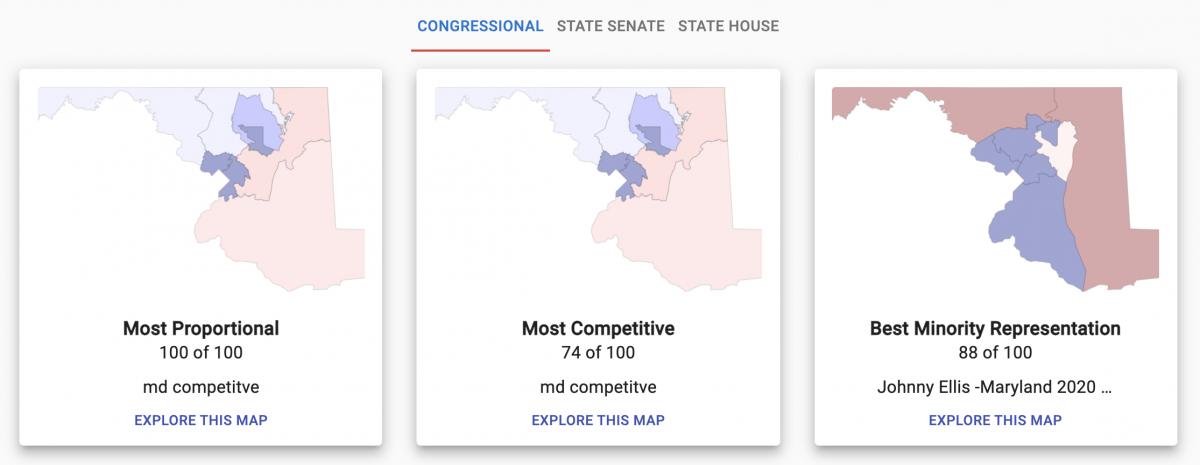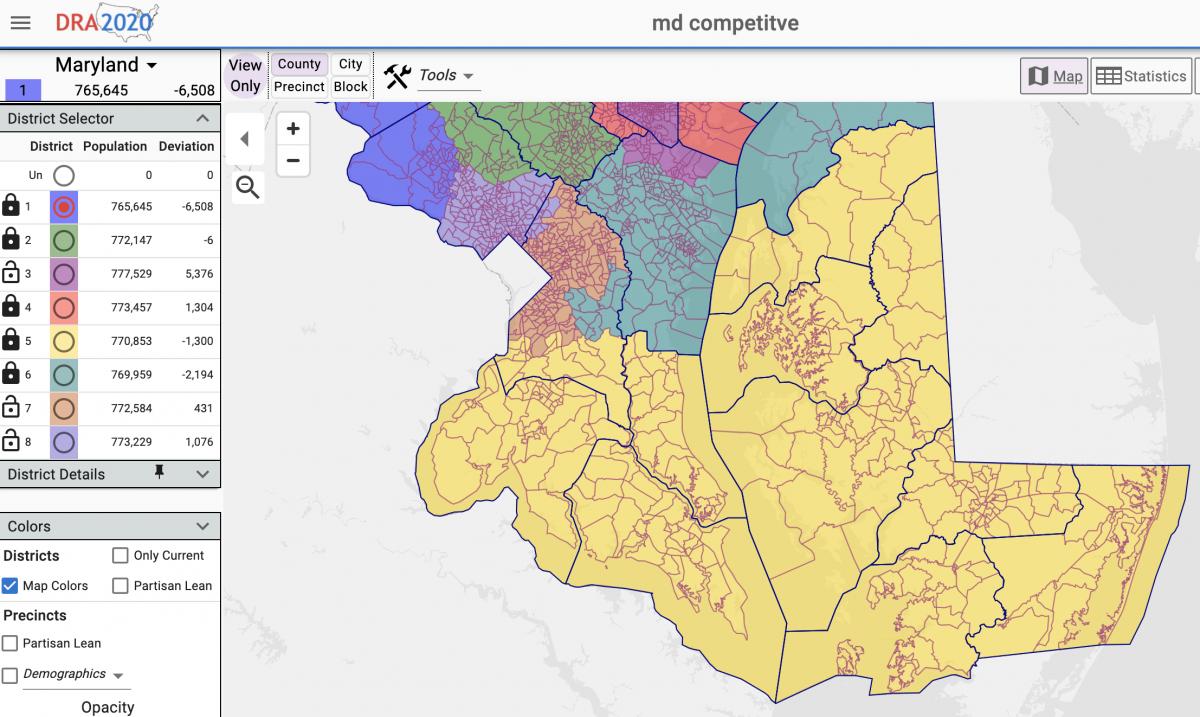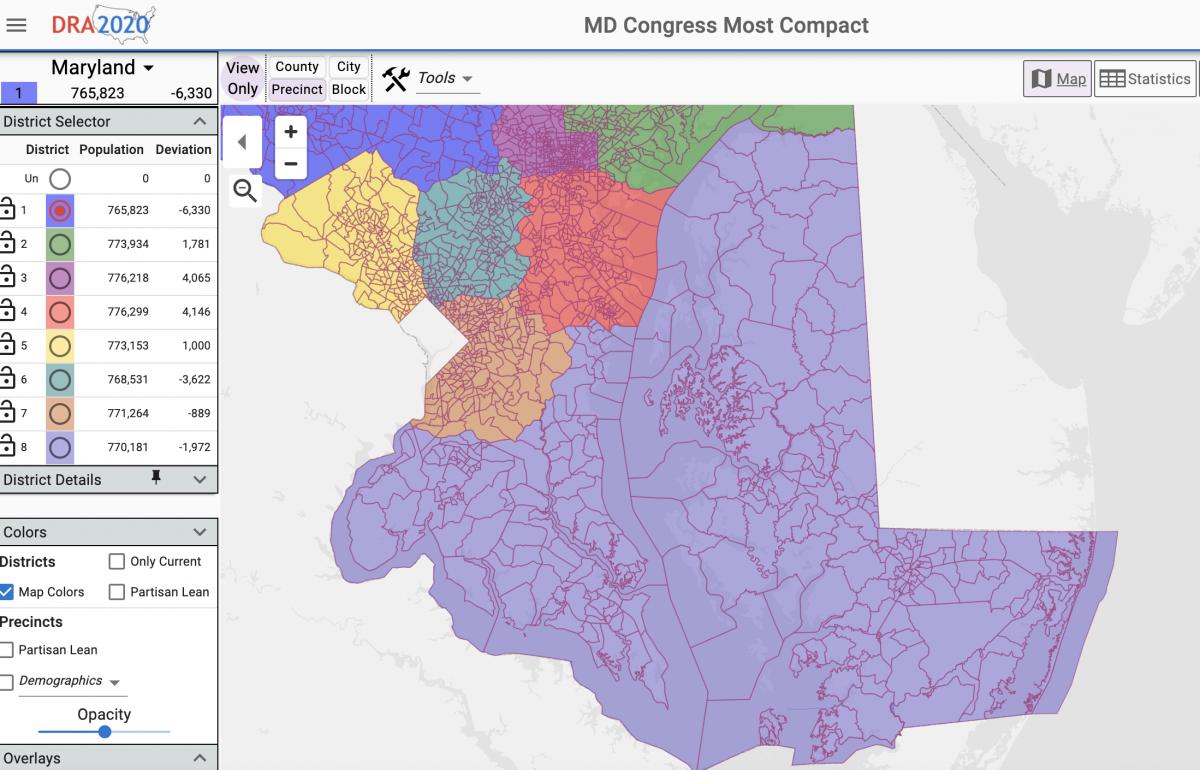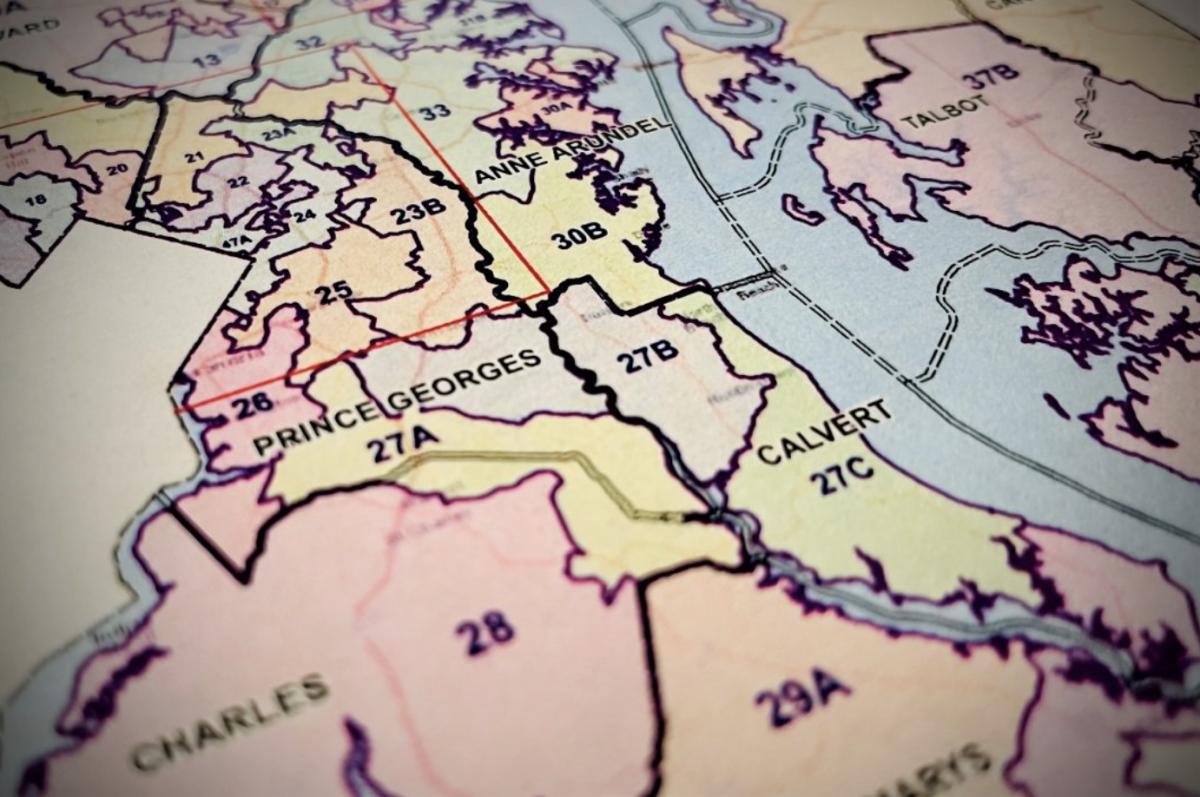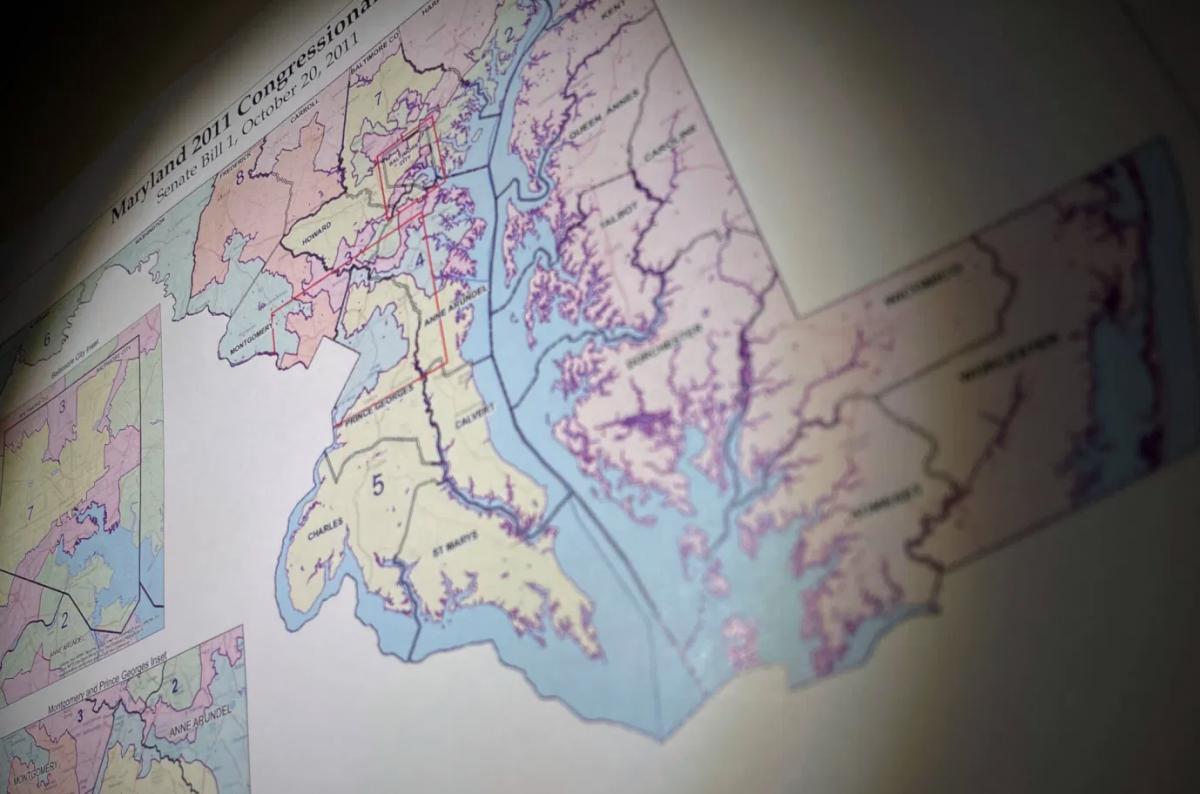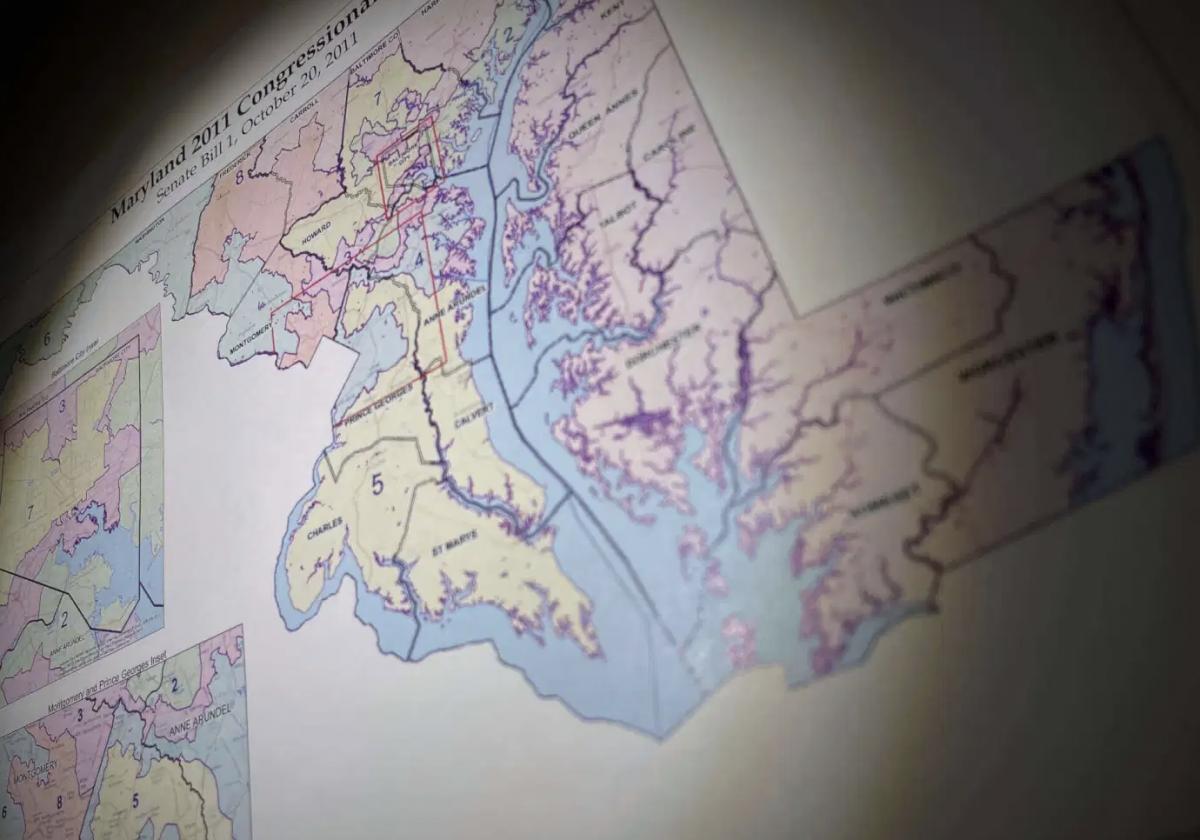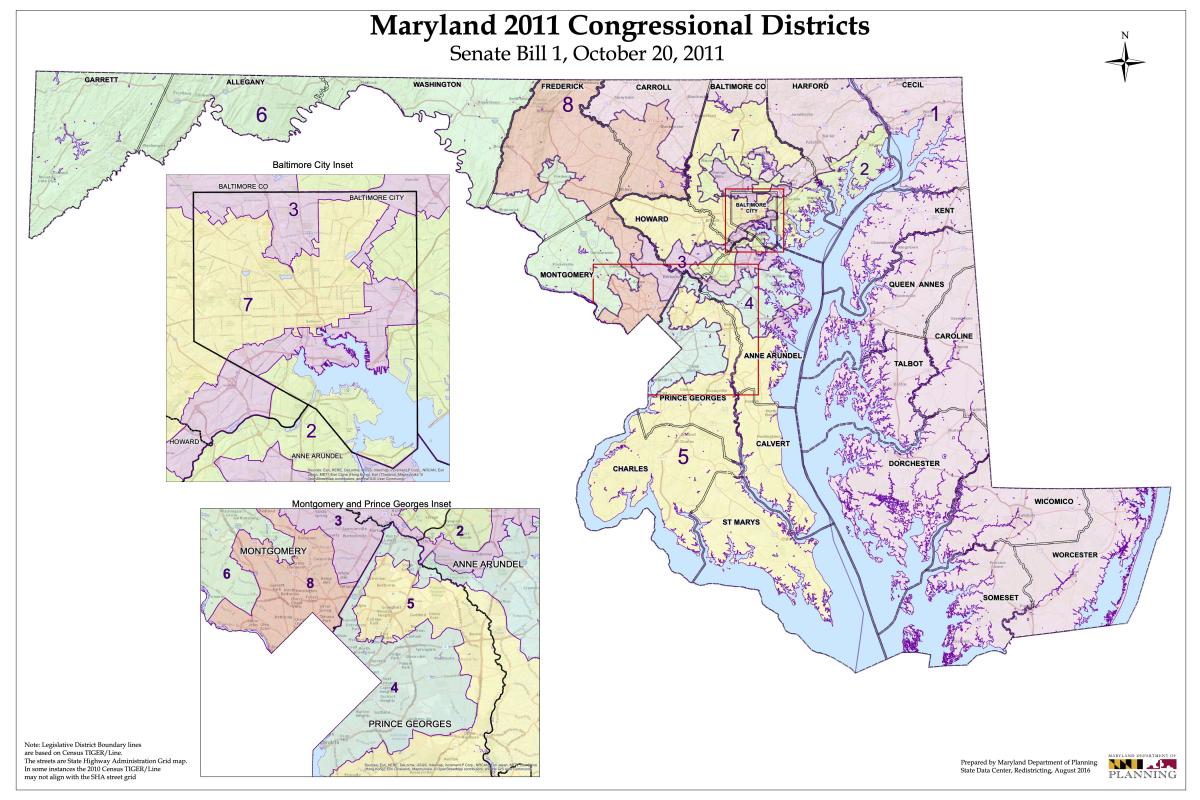Marylanders urged members of the General Assembly’s Legislative Redistricting Advisory Commission at a Tuesday hearing to make draft maps available for public comment before the panel’s last public hearing in November, arguing that the public should have a chance to weigh in before the General Assembly takes them up for a vote.
“It seems rather difficult for people to comment on the basis of a blank map,” Jacqueline Coolidge of the League of Women Voters told the panel at the online hearing.
Edward Johnson, co-leader of the Maryland Legislative Coalition, a progressive advocacy group, said that meaningful hearings can happen only when the commission presents draft maps.
Legislative leaders are tentatively planning a special session in early December to handle congressional redistricting, and Johnson said maps should be produced for public comment before then.
Morgan Drayton, policy and engagement manager for Common Cause Maryland, also urged the commission to produce draft maps before it concludes its public hearings in November. And she said the commission should consider starting its next statewide virtual public hearing at 6 p.m., rather than 3 p.m., to allow Maryland residents who work during the day to participate.
Nicole Y. Drew of Delta Sigma Theta, a public service-focused sorority that advocates for black communities, said the commission needs to undertake a “fair and transparent” process. She also urged members of the commission to ensure that people of color don’t have their votes diluted in the state’s next set of maps.
Commission Chair Karl Aro, a former director of the Department of Legislative Services, said the commission “will have draft maps for comment” but is gathering information.
Commission member Sen. Bryan W. Simonaire (R) noted the commission is set to conclude its public hearings on Nov. 18, and pressed Aro on when draft maps will be available for public comment.
Aro said he hopes the commission will produce draft maps by Nov. 15, and said the pandemic-related delay in Census redistricting data is to blame for the panel’s time constraints.
Aro said the public will also be able to comment when proposed district maps come up for committee hearings in the General Assembly’s special and regular sessions.
The Legislative Redistricting Advisory Commission’s next in-person meeting is set for Tuesday, Oct. 12 at 6 p.m. at Morgan State University in Baltimore.
The Maryland Citizens Redistricting Commission, a separate panel created by Gov. Lawrence J. Hogan Jr. (R) to draw maps that he will propose to the General Assembly, has already drafted maps for state senate and congressional districts and is currently weighing single- vs. multi-member delegate districts. That panel is set to begin its final round of virtual public hearings Wednesday at 6 p.m.
On Tuesday, the legislative commission also heard from Brandon Russell, a St. Mary’s County resident, who urged them to keep his county whole in congressional and state legislative maps. He noted that members of the Maryland Citizens Redistricting Commission included a portion of St. Mary’s County with Calvert County in their initial senate district maps, but that commission reversed course after backlash from county residents and made the county whole in a subsequent draft.
While both the Maryland Citizens Redistricting Commission and Legislative Redistricting Advisory Commission are tasked with conducting public hearings and drafting maps for congressional and state legislative districts, the General Assembly will have the final say over the state’s coming redistricting. Democrats hold a veto-proof majority in both the House of Delegates and the Senate.
By Bennett Leckrone


